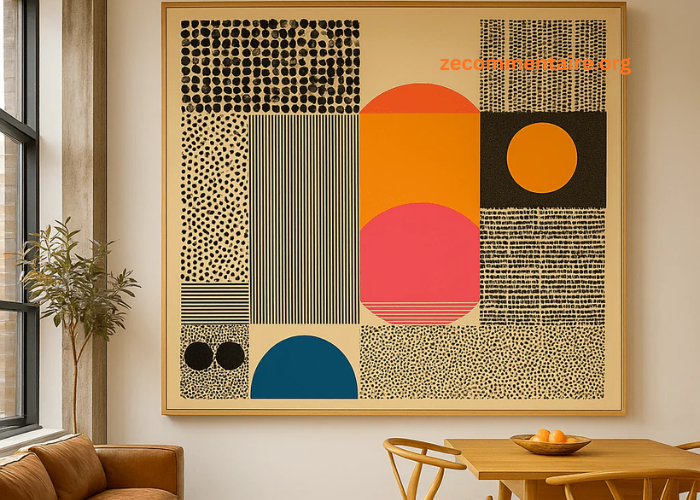In today’s digital-first world, your online presence is often the first impression your audience has of you or your brand. Whether you’re a business, freelancer, influencer, or organization, digital design plays a crucial role in shaping how you’re perceived online. A visually compelling and well-thought-out design can be the difference between engaging a visitor and losing them in seconds.
Here’s how you can leverage digital design effectively to strengthen your online presence. Read on.
Build a Consistent Visual Brand
Your visual identity is the face of your brand online. A cohesive design system helps people recognize and remember your brand.
This includes your logo, color palette, typography, imagery, and graphic styles. Here are the key steps:
Create a Brand Style Guide
Outline your colors, fonts, logo usage, and visual tone. This document serves as a reference for anyone creating content for your brand.
Apply It Everywhere
From your website to email newsletters to social media graphics, use your branding consistently. Uniform visuals foster a sense of professionalism and reliability.
Stay True to Your Identity
Choose visual elements that reflect your values, industry, and audience preferences. Consistency builds familiarity, which in turn fosters trust and recognition.
Design a User-Friendly Website
A visitor’s initial impression of your brand is frequently formed via your website. While a badly designed website turns consumers off, a well-designed one increases trustworthiness and promotes interaction. The following are a few best practices:
Responsive Design
Your site must work smoothly on all devices-desktop, tablet, and smartphone. A mobile-friendly layout also boosts your rankings in search engines.
Clear Navigation
Users should easily find what they need. Organized menus and intuitive layouts reduce frustration and increase conversions.
Visual Hierarchy
Use design to guide users’ eyes. Strategic placement of content elements ensures visitors engage with your most important messages first.
Fast Loading Time
Optimize images and code to prevent slow page speeds, which harm both user experience and SEO. A speedy site keeps users engaged and decreases bounce rates.
Optimize for Social Media
Social media is a powerful tool for building awareness, but your posts need to stand out in crowded feeds. Digital design makes your content eye-catching and memorable. Here are some social design tips:
Use Branded Templates
Create reusable templates for quotes, announcements, tips, and promotions. This saves time and reinforces your brand identity with every post.
Consistent Imagery
Stick with a visual style that aligns with your brand. Visual uniformity creates a recognizable aesthetic that your followers will associate with you.
Design for Each Platform
Instagram favors square images, LinkedIn prefers professional banners, and TikTok needs vertical videos. Each platform has unique specifications that affect visibility and engagement.
Incorporate Motion
Short videos, animated GIFs, and carousels perform well and keep audiences engaged. Movement naturally draws the eye and increases content interaction.
Leverage Visual Content Marketing
Digital design is central to content marketing. Visuals not only make your content more engaging, but they also improve comprehension and retention. Here are some content ideas:
Infographics
Break down complex data or concepts into digestible visuals. These are highly shareable and boost your content’s educational value.
eBooks and Whitepapers
Well-designed documents increase perceived value and authority. Professional layouts can position you as a thought leader in your niche.
Email Campaigns
Design mobile-friendly templates with compelling visuals and CTAs. Emails with strong visuals tend to get more clicks and conversions.
Video Content
Incorporate branded intros/outros, text overlays, and thumbnail graphics. Thoughtful design elements elevate your video’s production quality and appeal.
Improve Your SEO with Design
While SEO may seem unrelated to design, the two are increasingly intertwined. A well-designed site keeps users engaged, which signals to search engines that your content is valuable. Here are some design-driven SEO boosts:
Improved User Experience (UX)
Clean layouts, intuitive navigation, and mobile responsiveness lower bounce rates and increase time on site. Search engines reward sites that offer meaningful, enjoyable experiences.
Faster Page Loads
Compress image sizes and use scalable vector graphics (SVGs) when possible. Speed not only enhances UX but is also a direct Google ranking factor.
Structured Content
Use headings, bullet points, and visual breaks to enhance readability-this helps both users and search engines. A clean, scannable format improves accessibility and engagement.
Use Analytics to Inform Design Choices
Design is part art, part science. You can (and should) measure the performance of your digital design assets to refine your strategy. Here’s what to track:
Website Analytics
Use tools like Google Analytics or Hotjar to see how users interact with your pages. This data can reveal which areas are working well and which need improvement.
Social Media Performance
Track which visuals get the most engagement and shares. These insights help you create more content that resonates with your audience.
Email Open and Click-through Rates
A/B test different designs to see which layouts and images perform better. Small changes in layout or image choice can dramatically shift user behavior.
Invest in Professional Tools and Talent
If design isn’t your strong suit, consider outsourcing or using quality design platforms. Here are some resources to consider:
DIY Tools
Canva, Figma, Adobe Express, and Sketch are user-friendly tools for non-designers. These platforms offer drag-and-drop simplicity with powerful customization options. Having a useful profile picture maker tool can make wonder about your brand.
Professional Designers
Hiring a freelance or agency designer can elevate your brand dramatically. Skilled designers bring strategic thinking in addition to technical expertise.
Templates and Themes
Use pre-designed templates for websites, presentations, and emails that you can customize. These offer a fast, affordable way to maintain quality and consistency.
Update Your Online Presence With the Latest Digital Design
In an increasingly competitive online landscape, digital design is not just a luxury-it’s a necessity. It’s how your audience perceives you, interacts with your content, and decides whether to trust and engage with your brand. By developing a consistent visual identity, optimizing your website and user experience, creating engaging visual content, and aligning design with strategic goals, you can build a strong, memorable, and effective online presence.
Great digital design isn’t just about how it looks. It’s about how it works and the impression it leaves. When done right, it turns casual visitors into loyal fans and browsers into buyers.
If you want to read more articles, visit our blog.





